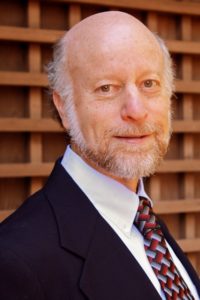August 2020
1. Who are you? Where do you come from? What is your background?
I am a Clinical-Child Psychologist and Family Therapist by profession of origin, and I originated from Los Angeles, where I went to UCLA as an undergrad. After getting my M.A. from San Jose State College, and my Ph.D. from Ohio State University in Clinical-Child and Developmental Psychology, I then took a year internship at the Institute for Juvenile Research and Family Therapy Institute in Chicago. Then, I worked in New Jersey as a clinical psychologist for three years. Upon returning to California, I began a small private practice and began teaching at the University of California, Santa Cruz, where I taught for 41 years. In the same year that I began teaching there (1977) I mark having done my first what-looked like-a-mediation case, and have since completed over 5,000 mediation cases.
2. What do your current professional practice and activities look like?
I continue with my private practice doing family therapy and family mediation, and continue presenting trainings and workshops in mediation and child development, nationally and internationally (most recent was for the Family Justice Court in Singapore—a very lovely venue!). I also spend time writing and publishing, and I edit the writings of colleagues, as a book and professional journal peer-reviewer, or just as a friend.
3. How did you first learn about mediation?
During the mid-1970s, I had been doing family therapy and seeing kids and couples for about 6 years in private practice, and, during the course of such work, some of the couples chose to get a divorce. Knowing something about children, but not much about divorce at the time, I helped these couples develop custody and visitation schedules (this was years before Isa Ricci coined the term “Parenting Plan”), and I had them submit these documents to the Court (which didn’t quite know what to do with them, procedurally, but they seemed to work nonetheless). After a few years of doing this, informally, one day I received a call from the Presiding Judge of our Superior Court who told me: “We just got a notice from the Statewide Administrative Office of the Courts that each county in California must implement “mandatory mediation” for custody disputes; I don’t know exactly what this mediation stuff is, but, from their description, it sounds like what you have already been doing with your cases. So, would you like to submit a proposal to contract with the Court to offer services that will satisfy this legislative mandate?” I did, and the rest is history; Family Mediation Service was born. In effect, and quite ironically, I never received training in mediation, just OJT.
Around that same time, I was asked to write a review of a newly published book by O.J. Coogler for the journal, Family Process [See: Saposnek, D.T. (1980). A critique and book review of O.J. Coogler’s Structured Mediation in Divorce Settlement: A Handbook for Marital Mediators, In Family Process, 19 (No.1), 89-93]. It was in publishing that review that I learned the strange way that the first family mediator (Jim Coogler) did mediation; very different from my own developed strategic style of doing mediation.
4. What do you hope to accomplish as a Board Member of APFM?
As I participated in developing and forming the Board, at the inception of APFM, in addition to helping to build the organization, I had hoped to bring my writing and editing skills to the new organization (For over three decades, I had been the Editor of the newsletters of AFM, AFCC (CA Chapter), and ACR, so I decided to continue serving our organization as Editor-in-Chief ex officio, and to continue promoting the writings of our smart and talented membership, as my way of getting the word out about our very important services for families in transition.
5. Where do you see the field of Family Mediation going?
Because of our increasingly litigious society, mediation will likely continue being the stepchild of litigation, at least throughout the tenure of the incoming presidential administration. This conclusion was best validated in the several attempts over the years by our colleagues to get a Reality TV show that featured mediation. All attempts got turned down, as the producers repeatedly would say things like: “Mediation is boring; conflict sells, but resolution doesn’t!” However, we must continue our efforts to promote mediation as the default conflict resolution methodology, even if it takes longer to gain momentum. It is simply the right thing to do! For more of my thoughts on this, see my article, published on the mediate.com website, “Mediation Going Forward: What Do We Know? What Can We Expect“?
6. What do you like to do when you are not mediating?
When I am not mediating, I am either meditating or medicating. No, seriously, I only need to do the second or third when the first is with a very high-conflict case! I also enjoy playing the piano (classical mainly, but also within many other musical styles), hiking, long walks on the beach (which only we coastal mediators have available), watching great movies, traveling with my wife, and seeing our lovely daughter and beautiful granddaughters. But wait, aren’t we always mediating??
